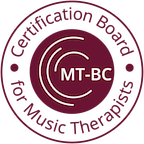OMREX in Neurologic Music Therapy
The world of Neurologic Music Therapy (NMT) offers a fascinating look into how music influences brain functions and how it can be utilized in therapeutic settings. Among the various techniques employed within NMT, Oral Motor and Respiratory Exercises (OMREX) is a valuable tool for individuals with neurological disorders, especially those with challenges in speech and oral motor functions. Designed to enhance articulatory control and respiratory strength, OMREX is proving to be a game-changer for many patients and therapists alike.
Understanding OMREX
Oral Motor and Respiratory Exercises involve the use of musical materials and exercises, mainly through sound vocalization and wind instrument playing. The aim is to enhance the respiratory strength and function of the speech apparatus, as well as to improve articulatory control. “This technique would be used with such populations as developmental disorders, dysarthria, and muscular dystrophy,” explain Hass and Distenfeld in their 1986 study that introduced OMREX to the therapeutic landscape.
Who Benefits from OMREX?
OMREX is particularly beneficial for children and adults experiencing a range of neurological disorders. From those born with developmental disorders to individuals diagnosed with muscular dystrophy or dysarthria (a motor speech disorder), OMREX offers a pathway towards improved communication skills and respiratory function. Its versatility and adaptability make it a preferred choice among music therapists and neurologists working with diverse patient populations.
The Key Benefits of OMREX
The approach of merging music with therapeutic oral motor and respiratory exercises yields several key benefits, including:
- Enhanced Articulatory Control: Through targeted vocal exercises and the use of musical instruments that require breath control, patients can experience improvements in speech clarity and articulation.
- Strengthened Respiratory Muscles: By engaging in controlled musical breathing exercises, individuals can strengthen the muscles involved in respiration, leading to improved breathing effectiveness and endurance.
- Motivating and Engaging: The musical aspect of OMREX adds an element of joy and engagement to therapy sessions, helping patients stay motivated throughout their treatment.
- Tailored to Individual Needs: Music therapists can customize OMREX exercises to match the specific needs and preferences of each patient, making therapy both effective and personal.
OMREX in Practice
Applying OMREX in therapeutic settings involves a thoughtful blend of musical elements with speech and respiratory therapy techniques. Music therapists may start with simple humming or singing exercises and gradually introduce wind instruments as the patient progresses. These instruments might include recorders, harmonicas, or even straws to mimic the mechanics of wind instrument play. Each session is designed to challenge and support the patient, encouraging steady advancement in their oral motor and respiratory capabilities.
Expert Insight
The endorsement of OMREX within the neurologic music therapy field underscores its value and effectiveness. Its foundation rests on the understanding that music, with its structured tempo, rhythm, and melody, can significantly impact non-musical brain functions, such as speech and motor control. This cross-modal property of music facilitates improvements in oral motor skills and respiratory function, presenting a holistic approach to therapy that transcends traditional methods.



